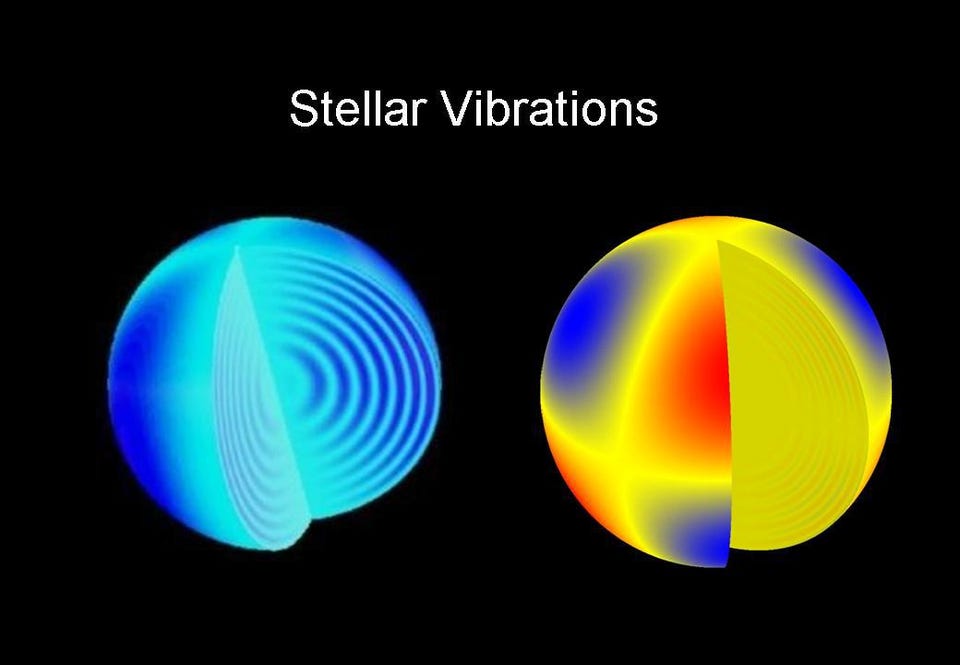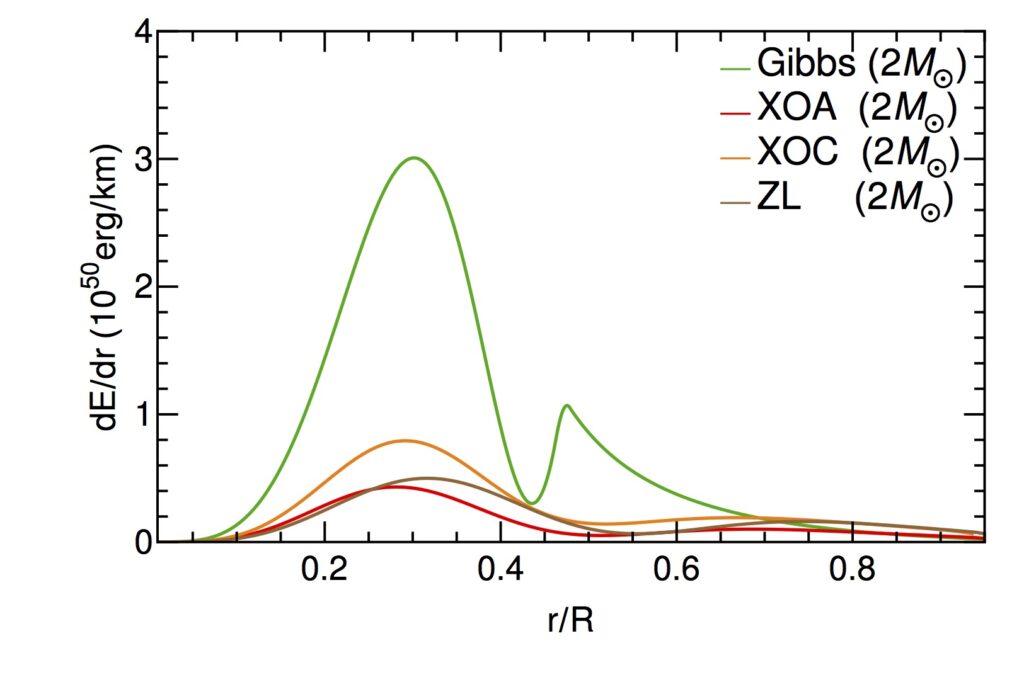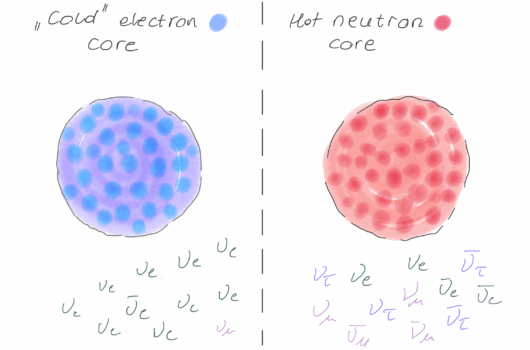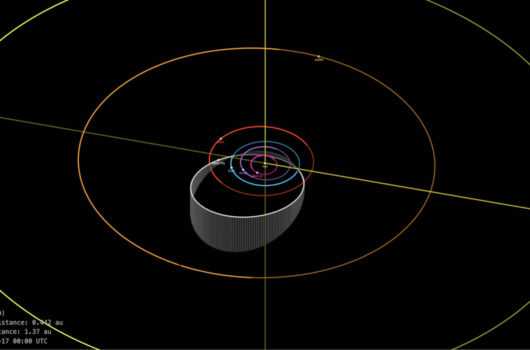Probing Neutron Stars’ Composition with g-mode Oscillations
What can we learn from observing the “ringing” (oscillation modes) of astrophysical objects? Similar to how seismologists study the density profile and chemical constituents of the Earth using earthquakes, stellar oscillation modes provide us with information about their otherwise inaccessible internal structures and compositional details. One such example is the closest star, our Sun, for which the revised opacity calculations that are in line with observed solar spectra successfully explained the mysterious pulsation period ratios of Cepheid stars.

Neutron stars are the most compact objects in the Universe second only to black holes, with their masses ranging from one to two times that of our Sun, squeezed into the size of a normal city. Matter in the inner cores of neutron stars attain ultra-high densities that are well beyond the reach of terrestrial experiments. Thanks to their extreme compactness, global oscillation modes of neutron stars, if present, can lead to emissions of gravitational waves (GWs) that are strong enough to be captured by the next-generation GW detectors such as Cosmic Explorer.
In our recent work we investigated core “g-modes” (gravity modes) of neutron stars. Such modes are driven by buoyancy or gravity, when a parcel of fluid is displaced against the background of a stratified environment and buoyancy acts as a restoring force to oppose the displacement. For cold stable neutron stars that are not convective, g-mode oscillations throughout the core supported by the opposing buoyancy force always exist. Their frequencies and amplitudes are highly sensitive to the composition gradient in the system.
We find that once observationally confirmed, global g-modes of neutron stars with exceptionally high frequencies (>600 Hz) are clear signatures for novel degrees of freedom i.e. deconfined quark matter through a phase transition, in the form of spatially-separated admixture with normal hadronic matter (“Gibbs” mixed-phase scenario). This is rooted in the difference between two types of sound speed — the adiabatic and equilibrium sound speeds — which exhibits distinctive behavior whenever a new species, such as quarks, emerges abruptly in the deepest region of the hybrid star. In contrast, if quarks appear through a smooth crossover where they are indistinguishable from the ordinary hadrons (crossover scenario), we find that effects on the global g-mode spectrum are in general much less prominent. One exception is when some drastic change in the particle concentrations such as disappearance of a strongly-interacting species occurs at a critical density, depending on the specific crossover model applied.
Our results also show that the g-mode amplitude and energy are strongly amplified with quark matter in the Gibbs mixed phase compared to hadronic matter only or smooth crossovers. This will leave imprints on the tidal phasing of GW signals detected in neutron star mergers, with higher resonance frequencies excited later in the inspiral. Based on the estimates performed, we anticipate that in the future as uncertainties are reduced through improved theoretical calculations, upgraded facilities with better sensitivity hold promise to shed new light on the composition of the neutron star inner core.

 neutron star; note that the mode energies in the ZL and crossover cases are scaled up by a factor of 10. While the profiles are similar for the first two, the mode energy in the Gibbs mixed-phase case is overwhelmingly larger in the core once quark matter appears.
neutron star; note that the mode energies in the ZL and crossover cases are scaled up by a factor of 10. While the profiles are similar for the first two, the mode energy in the Gibbs mixed-phase case is overwhelmingly larger in the core once quark matter appears. This introduction was prepared by N3AS fellow Sophia Han.
Read More:




